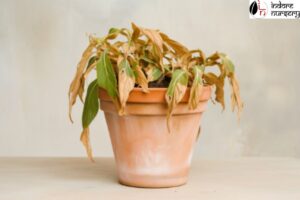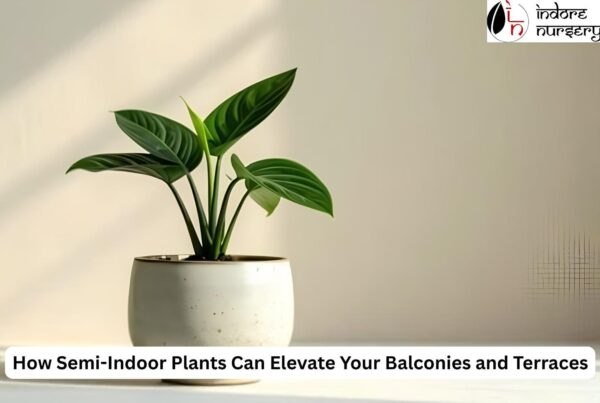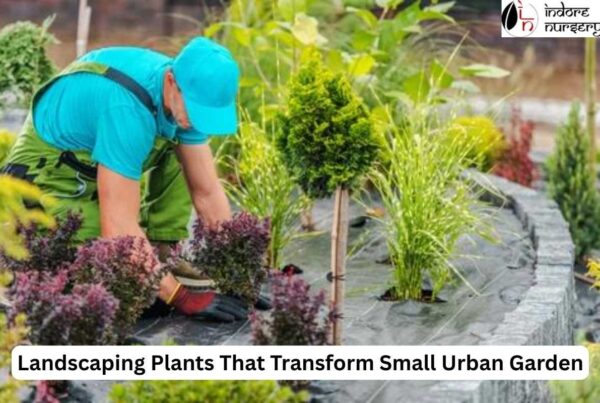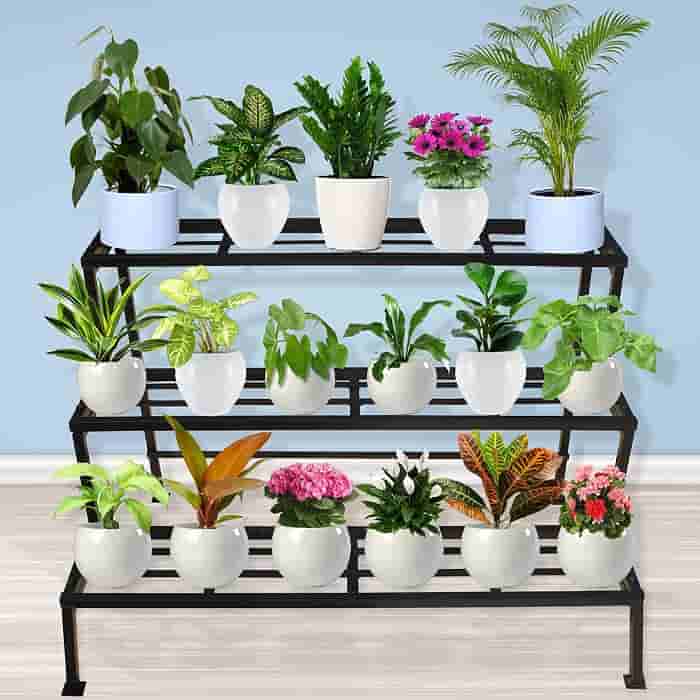Table of Contents
- Picking the wrong plants
- Skipping out on spacing requirements
- Potting improperly
- Not repotting at the right time
- Overlooking light needs
- Forgetting the fertilizer
- Overwatering
- Underwatering
- Conclusion
- FAQs
Bringing home new plants is a fun and rewarding experience. They brighten up your area immediately, be it a balcony or an indoor corner. But they require more than just a watering session. Most beginners accidentally commit tiny errors that kill plant growth. This blog picks out the most common mistakes that new plant owners make and how to correct them. You can get healthy plants at the best plant nursery in Indore to begin your journey.
1.Picking the wrong plants

One of the most frequent errors of new gardeners is selecting plants that aren’t appropriate for their conditions. Every plant has different requirements — some require sunlight, while other plants do better under shade. For instance, succulents do well in direct light, but ferns like humid low-light spots.
However, if you choose a plant which is not suitable for your house conditions, it will not survive. Before purchasing any plant, do some research regarding its light, temperature, and humidity requirements.
How to prevent this error:
- Select plants according to where you are going to place them (indoor or outdoor).
- Request the seller for low-maintenance plants if you are a beginner.
- Begin with low-maintenance plants like pothos, snake plant, or peace lily.
Additionally, when purchasing from an online plant nursery in Indore,carefully read the product description. The majority of online product descriptions include the preferred light and care requirements for every plant.
2. Skipping out on spacing requirements
Plants need space to grow, both above and below the soil. Many new plant owners crowd too many plants in one pot or too close together in a garden. This limits airflow and root growth, which can lead to weak plants or fungal infections.
How to avoid this mistake:
- Always read spacing instructions before planting.
- Leave enough room between plants for them to spread naturally.
- Repot or replant when the roots begin to get matted together.
Therefore, spacings properly allow plants to breathe, grow at an even pace, and receive sufficient nutrients from the ground.
3. Potting improperly
Potting could be easy, but getting it wrong kills your plant. The most common errors are using the incorrect pot size or neglecting drainage holes. The too-large pot fills with too much water, while the too-small pot inhibits root development.
How to get this wrong:
- Always select a bottom-draining pot.
- Include a layer of pebbles or shattered pieces of clay for additional drainage.
- Ensure the soil is suitable for your plant type (like cactus potting soil for succulents).
Additionally, if the plant is wilting or yellowing leaves, it could be a result of bad drainage or tight soil.
4. Not repotting at the right time
Repotting is necessary for growth, but new gardeners either don’t do it at all or repot too soon. With time, roots require more room to grow. When roots start growing out of the drainage holes, it means that your plant is root-bound and requires a larger pot.
How to avoid making this mistake:
- Repot yearly or when roots fill up the container.
- Select a pot that is one or two sizes bigger.
- Treat the roots with care during repotting.
Moreover, repotting provides your plant with new soil and additional nutrients so that it can grow healthier.
5. Overlooking light needs
Light is an important aspect of plant health. New plant owners tend to misunderstand the amount and type of light their plants receive. Putting a shade plant in full sun or a sun-loving one in a shaded area can result in burning or discoloration of leaves.
How to prevent it:
- Compare how much sunlight each spot in your house gets.
- Turn indoor plants several weeks to allow every side to get light equally.
- If your house is not well-lit, use man-made grow lights.
However, keep in mind that even low-light loving plants require some indirect sunlight in order to remain healthy.
6. Forgetting the fertilizer
Plants require nutrients in the same way that humans require food. A lot of beginners forget to fertilize or over-fertilize. Without the right nutrition, plants can grow slow, have yellow leaves, or have fewer flowers.
How to prevent this error:
- Apply a balanced fertilizer every few weeks when the plant is in the growing phase.
- Read the label instructions carefully—overapplying fertilizer will burn roots.
- Apply organic compost for a natural boost.
Moreover, regular fertilizing ensures plants heal quickly from pruning or repotting.
7. Overwatering
Overwatering is most likely the biggest error that new plant owners commit. Most people consider watering every day to be a must, but in actuality, it promotes root rot. When roots are in water for an extended period, they starve of oxygen and start to rot.
Symptoms of overwatering:
- Yellow or wilted leaves
- Moldy on soil surface
- Soft or mushy stems
Avoiding this error:
- Inspect the surface inch of soil prior to watering—if it’s dry, water the plant.
- Ensure your pot is well-draining.
- Water less in winters.
Furthermore, using a moisture meter will inform you exactly when your plants are in need of water.
8. Underwatering
Although overwatering is worse, underwatering is also bad. Some amateurs forget to water or believe plants can last with random rain. If plants don’t receive enough water, they wilt, dry out, and fail to grow.
How to get it wrong:
- Put a reminder to water your plants every week.
- Modify your watering frequency based on the weather.
- Use self-watering pots if you tend to forget to water.
Additionally, if your soil is drawn away from the edges of the pot, it’s an indication your plant needs water.
Conclusion
Taking care of plants can be a little confusing to start, but it gets more manageable once you comprehend what they need. By not making these mistakes—such as picking the wrong plants, overwatering or underwatering, neglecting spacing, or not using fertilizer—you can have healthy, content greenery at home.
Furthermore, if you want to begin your plant adventure, check out the biggest nursery in Indore to get expert advice and a variety of lovely, low-maintenance plants. Plant with love, with patience, and with a little every day for best results.
FAQs
- How often do I need to water my houseplants?
Water only when the top soil layer feels dry. - Why do the leaves of my plants turn yellow?
Yellow leaves typically indicate overwatering or insufficient sunlight. - How often should I repot my plants?
Repot annually or when roots begin developing beyond the container.










Recent Comments